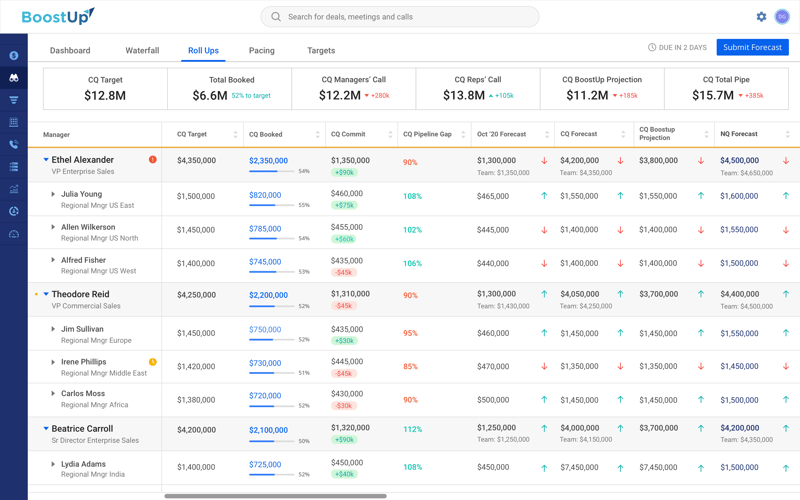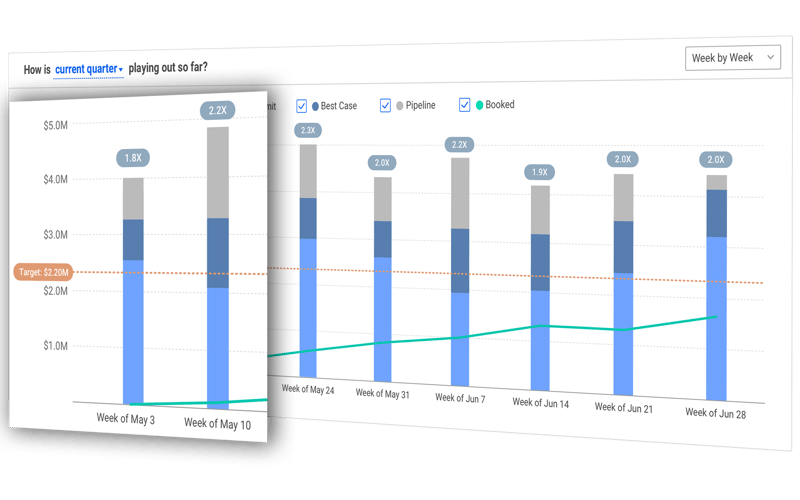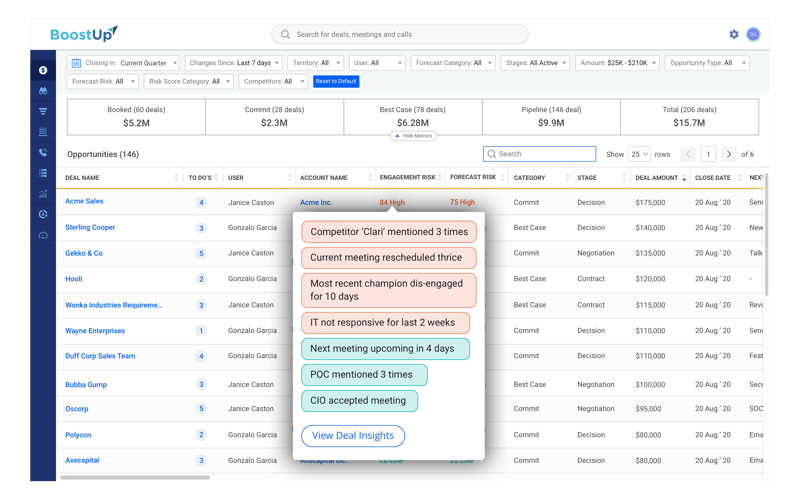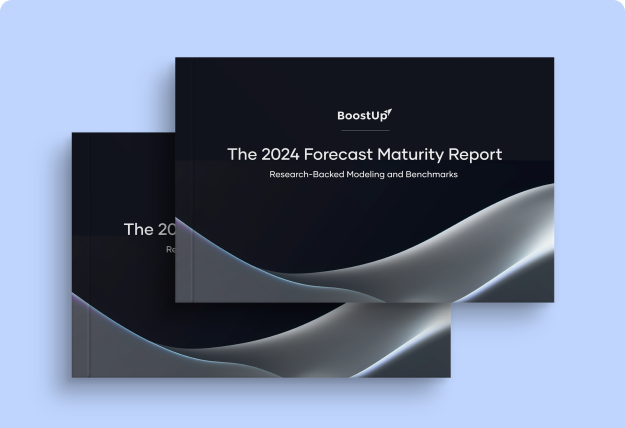The Revenue Blog /
10 Things RO&I Can Do That Forecasting Spreadsheets Can’t
10 Things RO&I Can Do That Forecasting Spreadsheets Can’t

Topics covered in this article
Forecast Intelligence vs. Spreadsheets
Spreadsheets are a staple in any business, regardless of size, type, or industry. That all makes sense, as they’re great for many things, from organizing text to advanced calculations.
The flexibility and capability of spreadsheets once made them the go-to vehicle for sales forecasting, as they allowed managers to merge data from CRM, sales reps, and their own gut feeling.
Unfortunately, sales forecasting spreadsheets are highly manual, error-prone, stagnant, and require an immense amount of work and human interpretation to be useful.
The time of forecasting in spreadsheets has come and gone. Today, the capabilities of sales forecasting platforms have far surpassed anything that can be accomplished with a spreadsheet. They are automatic, intelligent, flexible, and highly accurate. These AI-enhanced revenue intelligence platforms are faster, create better visualizations, provide automatic alerts, and can integrate far more data.
Here are some of the distinct advantages that forecast intelligence platforms have over spreadsheets.
1. Automatically roll-up entire team's commit from the CRM
With integrations into Salesforce and other CRMs, forecast intelligence automatically collects, processes, and displays the team's sales and revenue forecast roll-ups. Users can see the entire roll-up, and examine what specifically changed without any extraneous work. Break down your forecast by product line, business type, region, to understand what exactly is expected to close, and how you will get there.

2. Managers can include or exclude individual deals as part of their calls
The best sales managers have an intimate understanding of every deal that their team is working. Activity analytics, one-on-ones, sales forecasting review meetings, and conversation insights provide them with the knowledge they need to form gut decisions around which deals will close and what won’t.
When it comes to forecasting, forecast platforms allow managers to override rep-created forecasts with just a few clicks. If a rep is overzealous about a particular opportunity, or one is being too critical, managers can instantly include or exclude any deal from their forecast. The platform will automatically adjust the overall pipeline and you can see exactly where you stand.
3. Managers can override deal amounts in sales forecast calls
Sales and revenue forecasting platforms also allow sales managers to easily override deal amounts. If they feel a reps’ deal will close, but not for the amount forecasted, the amount can be adjusted right in the forecast, and the pipeline will instantly reflect the new amount.
4. Compare pacing against previous time periods
One of the biggest advantages of forecasting platforms is the ability to instantly refer back to historical performance data for comparisons. These platforms collect data in retrospect, meaning they can analyze performance as far back as you have data.
Revenue Operastions & Intelligence (RO&I) sales forecasting platforms can pull this data into your current forecasts, so you can understand how you are performing against the last quarter, the last year, custom date ranges, and so on. Historical data can also be filtered for specific metrics, like business type for even more granular analysis.

5. See sales manager forecast completion in real-time
Experts say that a regular forecasting cadence is one of the keys to continuous sales success. As such, it is important to see when forecasts are submitted. Forecasting platforms can track sales forecast creation performance and can determine if forecasts are submitted late, changed, or not at all.
6. Send managers sales forecast update reminders
Forecasting platforms also reduce the amount of micro-management required from sales leaders. Once you’ve established your forecasting cadence, platforms can send automatic reminders to managers, letting them know it’s time to submit their sales or revenue forecast.
This helps drive process compliance and standardization of best practices, without further effort required on the behalf of your team.
7. Remind sales reps to update their commits
Just like your revenue and sales forecasting platform can alert sales managers to update their numbers, it can also notify reps when it is time to update their commits. Again, this is an effort-free way to drive sales process compliance and ensure your forecasts are up to date.
8. Track manager forecast call history
In addition to allowing managers to include, exclude, and edit forecasted deals, sales forecasting platforms also track their edit history, allowing sales leaders to see exactly what changed and why.
9. Tell you why the pipeline or forecast has changed
Another massive benefit of sales forecasting platforms is that they are all-encompassing. The best forecasting platforms are fully integrated with all of your sales tools, and actively collect and analyze sales interactions.
This means that when your pipeline changes, it only takes a few clicks to see which specific deals have shifted, and what exactly happened within them, down to the emails that were exchanged or the conversations that were had.
In contrast, if you see something in your spreadsheet, you have the go into your CRM, examine the deal, then track down the communications surrounding the change.
10. Provide predictions and analysis with AI-enhanced Revenue Intelligence
*BoostUp's Forecast AI Projection Workflow.
Sales forecasting platforms also include artificial intelligence, something spreadsheets can never do. This AI constantly monitors every deal, it analyzes communications, interprets buyer behavior, and draws insights to calculate risk. It can alert your and your team to pipeline risks that amount to lost opportunities or slipped deals before they happen, and provide recommendations on how to remedy them.
Real-Time Sales Forecasting
BoostUp.ai’s AI-powered platform constantly compares your pipeline to your forecasting in real-time. Not only that, but it examines pipelines on a deal-by-deal basis to identify the opportunities that are at risk and recommends the actions required to remedy them.
Want to know more about BoostUp? Tour BoostUp's predictive sales forecasting solution.
You can also contact us at info@boostup.ai or schedule a demo here.




-Photoroom.png)